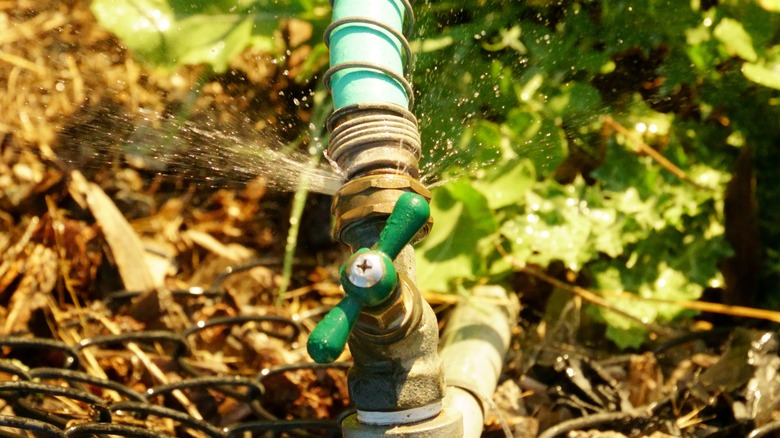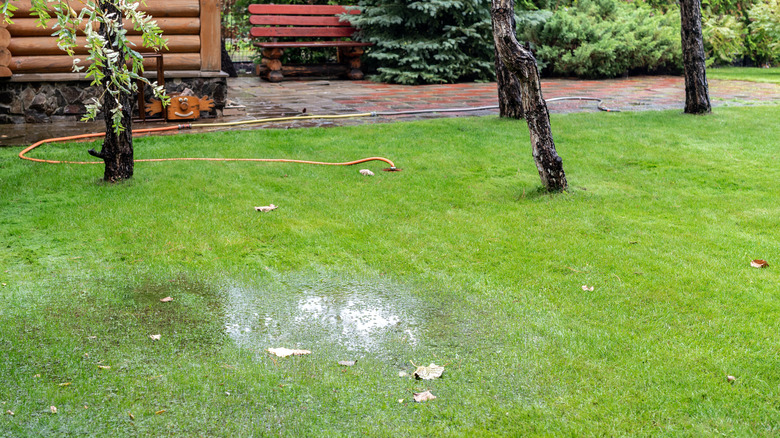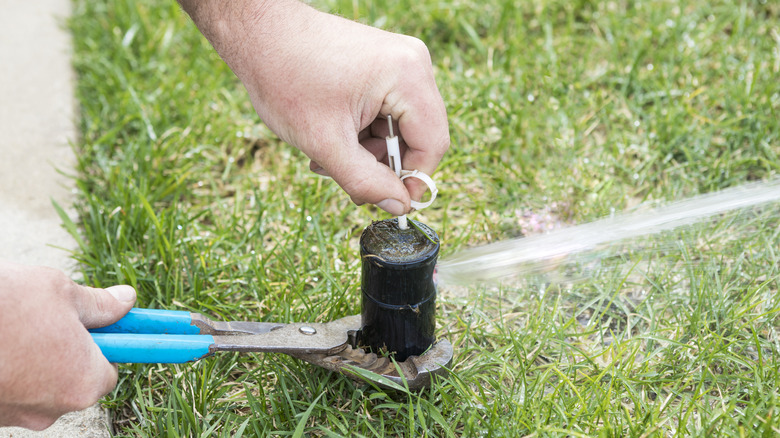Why It's Essential To Fix A Small Leak In Your Lawn's Sprinkler System
While a small leak in your lawn's irrigation system may not seem like a big problem at first, it can lead to major consequences. Even an opening as small as the size of a dime can drain up to around 6,300 gallons of water per month, according to Missouri American Water. In addition to the waste of natural resources, this expense can appear as an unpleasant surprise on your water bill. There could be other consequences to a leaky sprinkler as well, such as a costly fine from the city, damage to your home, or even liability for damage to your neighbors' homes.
One problem is that a small sprinkler leak can go undetected for a long period of time. Most people set their sprinkler systems to operate early in the morning or late at night when a leak wouldn't be noticeable right away. It's also harder to detect if it occurs underground, which can happen if the system was damaged during a heavy winter freeze. Another challenge is when the system breaks when a homeowner is out of town. No matter how the leak occurs, it's important to repair the sprinkler as soon as possible to prevent the problem from escalating into something worse.
Damaging consequences
One reason it's important to repair a leak in your sprinkler system promptly is that it doesn't take long for it to start to cause damage to your lawn. If the leak has prevented water from reaching certain areas of your landscaping, plants and grass can start to dry out very quickly and die, especially in the summer heat. However, too much water can harm your lawn as well. When grass is underwater even for a brief period of time, the root system will become damaged. When this happens, the grass begins to turn yellow or brown because it's unable to absorb nutrients. Then you may be faced with the cost of replacing not only the areas that received too little water but also the areas that were underwater for too long.
An unrepaired sprinkler leak can damage your home, too. Standing water can harm your foundation when the soil around it begins to expand and contract with the extra moisture. A pool of water that accumulates near your house can also seep inside, creating further destruction that you may not notice right away, as well as cultivating an environment where mold begins to grow. On average, the cost to remove mold from a basement can range from as low as $500 up to $4,000, and these numbers may increase depending on how hard it is to reach the affected areas.
Additional liabilities
These same detrimental effects resulting from a leaky sprinkler could take place in your neighbor's yard as well if excess water pools against the side of the house next door. If this happens for too long, it puts you at risk of having to pay to replace their dead lawn or clean up their moldy basement. A leak also carries a risk of liability. For example, a broken sprinkler head may lead to a slippery surface, which could lead to a slip or fall. Further, a passerby may try to avoid the spray from your broken sprinkler, only to walk into the street and leave themselves vulnerable to possible injury or accident.
Keep your eyes open for signs of a leak, such as areas of your lawn that seem too dry or collect puddles. Even if you don't see something as obvious as a pool of water, you may notice one patch of grass seems to be greener or growing faster than the rest of the lawn. Regular maintenance for your sprinkler system can catch these problems before they begin, and the cost is much lower than facing the consequences of a lingering leak. This service would include inspecting the irrigation system, cleaning the sprinkler heads, and preparing the sprinkler system for the winter months. The average cost of regular sprinkler maintenance ranges from $50 to $350. When faced with the alternatives, this maintenance fee seems like money well spent.


